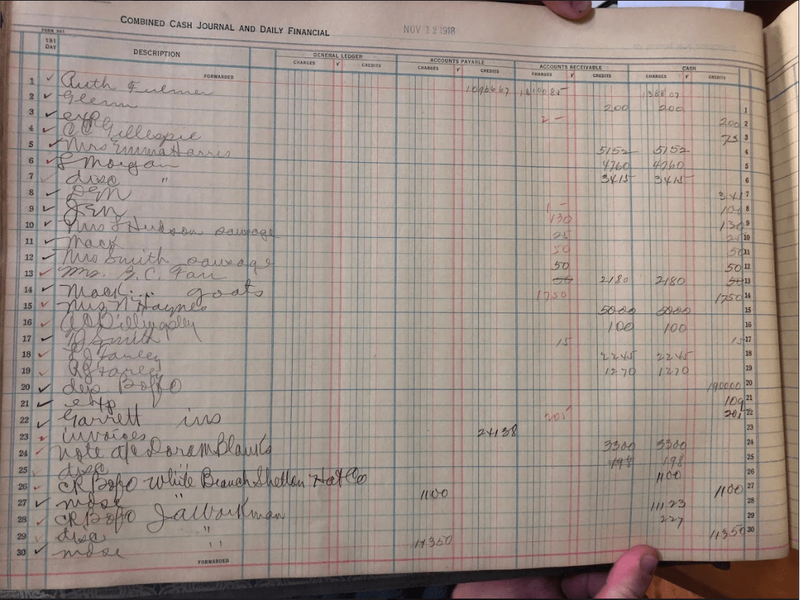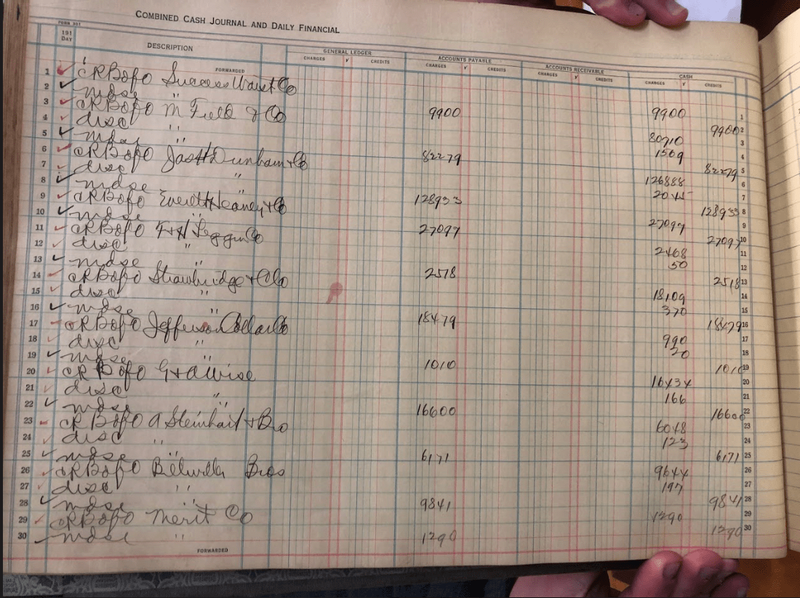Student Work
Oxford’s War Stress
By: Matt Crouse

Poster showing a soldier with a machine gun in the heat of battle, reaching out for ammunition. This image is available from the United States Library of Congress’s Prints and Photographs division
Effects of World War I on Consumer Purchasing
This small excerpt, from the J.E. Neilson Co. Department Store Ledgers highlights one of the most important sets of dates in the history of the United States of America(i). November 10, 1918, through November 12, 1918, includes the day that Germany signed an armistice to effectively end World War I, as well as the two days surrounding that eventful day. This was not only the end of a conflict for the United States but a global agreement for peace that would affect the people of over 30 countries. While it can be difficult to gather a great deal of information from the financial activity at one department store, it cannot be argued that World War I had a profound economic effect on the entire country, including one small town in Mississippi. In the ledgers, the dates of November 10, 1918 and November 11, 1918 look incredibly similar to the past four years while the United States continued to fight overseas during World War I. The many ways that a war can affect citizens, businesses, and towns are on full display throughout the pages of the Neilson’s Ledgers. For this small-town department store located in Oxford, Mississippi, business was slow as many men were off to war and the women were doing everything they could to keep things stable at home(ii). Then, on the 11th hour of the 11th day of the 11th month (November 11, 1918), the Germans signed an armistice to end the fighting of World War I(iii). The effect of the end of World War I did not become evident in the Ledgers until the 12th day of November. As seen in the photograph of the Ledger, while the sales of November 10th and 11th took up less than a page, the sales of November 12th took up almost three full pages. It appears that while the war was going on, people endured a state of financial uneasiness that was apparently lifted with the news of a call for peace(iv). Just by studying the sales of a department store in a small town in Mississippi, a person can feel the hardship and the stress that was put on the citizens of the United States during this period. While the significant spike in sales can be proven by the ledgers kept by the J.E. Neilson Co, Department Store, it can be assumed that stores of all kinds all over the United States and all over the world had similar success during this short window in history.
Ledger 35, November 10, 1918 from Neilson’s Collection, Department of Archives and Special Collections, The University of Mississippi Libraries.

Ledger 35, November 11, 1918 from Neilson’s Collection, Department of Archives and Special Collections, The University of Mississippi Libraries.

Ledger 35, November 11, 1918 from Neilson’s Collection, Department of Archives and Special Collections, The University of Mississippi Libraries.

Ledger 35, November 11, 1918 from Neilson’s Collection, Department of Archives and Special Collections, The University of Mississippi Libraries.
(i) J.E. Neilson Co. Ledger #35 November 10,1918-November 12, 1918.
(ii)Capozzola, Christopher. Uncle Sam Wants You: World War I and the Making of the Modern American Citizen. New York, NY: Oxford University Press, 2008.
(iii) Stevenson, David. 1914-1918: The History of the First World War. London: Penguin, 2012.
(iv) Broadberry, Stephen, and Mark Harrison. The Economics of World War I. Cambridge: Cambridge University Press, 2005.
